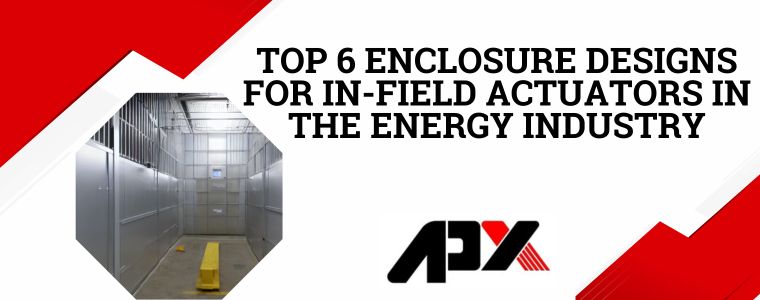Enclosure designs play a crucial role in protecting in-field actuators, ensuring their longevity and functionality in demanding environments. In this article, we will explore the top enclosure designs for in-field actuators in the energy industry.
1.1 The role of enclosures in protecting in-field actuators
In-field actuators are exposed to various environmental factors that can compromise their performance. Enclosures act as a shield, safeguarding these sensitive components from harsh conditions such as extreme temperatures, moisture, dust, and debris. Without proper enclosure protection, the risk of premature failure and costly maintenance increases.
1.2 Overview of the energy industry’s demand for enclosure designs
The energy industry, with its diverse applications ranging from power generation facilities to oil and gas installations, requires enclosure designs that can withstand rigorous operational demands. These designs must ensure the safety, reliability, and efficiency of in-field actuators in a wide array of environmental conditions.
2. Importance of robust and reliable enclosure designs in the energy industry
The energy industry relies heavily on the proper functioning of in-field actuators to control critical processes. Robust and reliable enclosure designs are of paramount importance to maintain actuator performance and prevent costly downtime.
2.1 Impact of harsh environmental conditions on actuator performance
Actuators exposed to extreme temperatures, high humidity, corrosive substances, or excessive dust face significant risks. These conditions can lead to accelerated wear and tear, corrosion, and reduced operational efficiency. Proper enclosure designs help mitigate these risks, extending the lifespan of actuators and minimizing the need for frequent replacements.
2.2 Ensuring safety and operational efficiency through reliable enclosures
Safety is a top priority in the energy industry. Enclosures that meet stringent safety standards provide an additional layer of protection against electrical shocks, fire hazards, and other potential dangers. Furthermore, reliable enclosure designs ensure the consistent performance of in-field actuators, enabling smooth operations and optimizing energy production.
3. Enclosure design considerations for protecting actuators from environmental factors
To effectively protect in-field actuators, enclosure designs must take into account the specific environmental challenges they may encounter. Let’s explore some key considerations for designing enclosures that offer optimal protection.
3.1 Understanding the environmental challenges faced by in-field actuators
From scorching heat to freezing cold, in-field actuators are exposed to a wide range of temperatures. Enclosures should have appropriate insulation and ventilation systems to maintain an optimal operating temperature range. Additionally, resistance to moisture, dust, and debris ingress is crucial to prevent internal damage.
3.2 Waterproof and weather-resistant enclosure designs
In outdoor energy applications, enclosures must be waterproof and weather-resistant. These designs often feature sealed seams, rubber gaskets, and corrosion-resistant materials to keep moisture and harsh elements at bay, ensuring the optimal performance and longevity of in-field actuators.
3.3 Dust and debris protection in enclosure designs
Industries such as coal mining or construction sites expose in-field actuators to high levels of dust and debris. Enclosures with effective filtration systems, dust seals, or pressurized compartments can prevent the ingress of contaminants, minimizing the risk of clogged mechanisms and compromised functionality.
4. Exploring different enclosure materials and their suitability for in-field actuators
Enclosures can be made from various materials, each offering unique advantages and suitability for specific applications. Let’s delve into some commonly used enclosure materials for protecting in-field actuators.
4.1 Metal enclosures: durability and resistance to extreme conditions
Metal enclosures, such as stainless steel or aluminum, are known for their durability and resistance to extreme temperatures, corrosion, and impact. These enclosures offer excellent protection for in-field actuators in demanding environments, making them ideal for applications in the energy industry where ruggedness is crucial.
4.2 Plastic enclosures lightweight and corrosion-resistant options
Plastic enclosures, typically made from high-quality thermoplastics like polycarbonate or ABS, provide a lightweight yet robust alternative. These enclosures offer good corrosion resistance, making them suitable for both indoor and outdoor applications. Plastic enclosures often feature modular designs, allowing for easy customization and adaptation to different actuator sizes and configurations.
4.3 Composite enclosures: balancing strength, weight, and cost considerations
Composite enclosures combine the strengths of different materials, such as fiberglass reinforced polymers (FRP). These enclosures offer a balance between strength, weight, and cost-effectiveness. They provide excellent resistance to corrosion, impact, and UV radiation, making them suitable for various energy industry applications.
With the right enclosure design and material selection, in-field actuators can be effectively protected, ensuring their reliability and longevity in the demanding energy industry.
5. Innovative Enclosure Designs for Enhanced Actuator Performance and Longevity
5.1 Modular Enclosure Systems for Flexible Installation and Maintenance
Let’s face it, nobody wants to deal with a clunky and cumbersome enclosure when it comes to installing and maintaining actuators in the field. That’s where modular enclosure systems step in to save the day. These innovative designs offer flexibility in installation and maintenance, allowing for easier access and reducing downtime.
The beauty of a modular enclosure system lies in its ability to be easily assembled, disassembled, and reconfigured as needed. Need to add or remove components? No problem. With modular enclosures, you can swap out parts without having to dismantle the entire unit, saving you time and headaches.
5.2 Thermal Management Solutions in Enclosure Designs
Actuators can generate a lot of heat during operation, and excessive heat can lead to performance issues and even premature failure. That’s where thermal management solutions in enclosure designs come into play. These ingenious designs help dissipate heat and maintain optimal operating temperatures, ensuring the longevity and reliability of your actuators.
From passive cooling techniques like heatsinks and ventilation to active cooling methods such as fans and liquid cooling systems, enclosure designs are now equipped with a range of solutions to keep those actuators cool and happy.
5.3 Vibration and Shock Absorption Features in Enclosure Designs
In the energy industry, with all the vibrations and shocks that actuators may encounter, it’s crucial to have enclosure designs that can handle the rough and tumble. Thankfully, modern enclosure designs integrate vibration and shock absorption features to protect these delicate components.
These designs employ various techniques like rubber mounts, shock absorbers, and dampening materials to isolate the actuators from external vibrations and shocks. This not only preserves the performance of the actuators but also ensures their longevity in demanding environments.
6. Future Trends and Advancements in Enclosure Designs for In-Field Actuators
6.1 Integration of IoT and Smart Technologies in Enclosure Designs
The dawn of the Internet of Things (IoT) and smart technologies has paved the way for exciting advancements in enclosure designs. Imagine actuators that can communicate their status, receive commands, and even self-diagnose within the enclosure itself. The possibilities are endless!
Enclosure designs of the future are likely to integrate IoT capabilities and smart sensors, allowing for remote monitoring, predictive maintenance, and improved efficiency. Say goodbye to manual inspections and hello to proactive and intelligent enclosure systems that keep you one step ahead.
6.2 Advances in Material Science for Improved Enclosure Performance
As technology progresses, so does material science, opening doors to more advanced enclosure designs. With the development of new materials and coatings, enclosures can now offer enhanced strength, durability, corrosion resistance, and thermal management capabilities.
From lightweight yet robust composites to advanced nano-coatings, these material innovations will continue to push the boundaries of enclosure performance. As a result, we can expect enclosures that are lighter, more compact, and even more resilient to the harshest conditions, ensuring the optimal performance and longevity of in-field actuators.
In conclusion, the selection and implementation of appropriate enclosure designs for in-field actuators in the energy industry are critical to ensure their protection and reliable performance. By considering the environmental challenges, exploring different materials, embracing innovative designs, and learning from successful case studies, energy professionals can make informed decisions to safeguard their actuators effectively. Additionally, staying updated with future trends and advancements in enclosure design technologies will pave the way for even more efficient and intelligent solutions. By prioritizing enclosure designs, the energy industry can optimize operational efficiency, reduce downtime, and ensure the longevity of in-field actuators, ultimately contributing to a more reliable and sustainable energy infrastructure.




